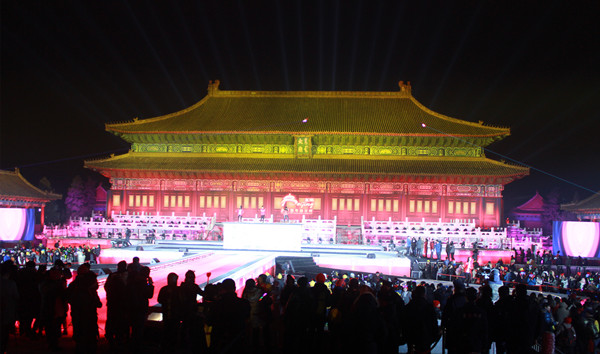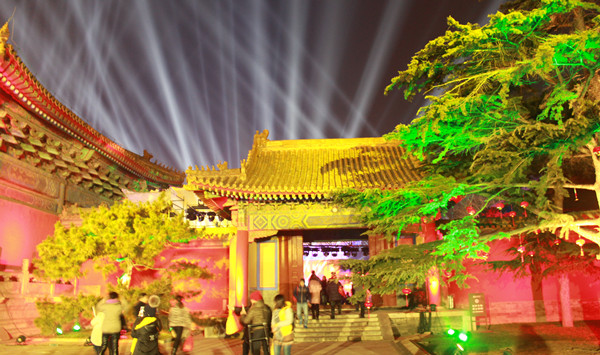Today’s Imperial Ancestral Temple has a new name: Working People's Cultural Palace, which was used by imperial family members to offer sacrifices to their ancestors during the Ming (1368-1644) and Qing (1644-1911) Dynasties. In 1950, Mao Zedong opened it to the public and the name was changed to the today’s name. Now it is a place for local people to entertain themselves.

Part of the Forbidden City, its construction started in the 18th year of Yongle (1420) under the reign of Emperor Zhu Di (Ming Dynasty). Like many imperial buildings, it is symmetrical with the Glazed Gate, stone bridges, Halberd Gate and three halls arranged on the central axis
Inside the glazed gate of the second wall, there are seven single-arched stone bridges stretching above the Golden River. The marble-white railings of these bridges are engraved in the shape of dragons and phoenixes. Originally, the middle bridge was for the emperor and the side bridges were for princes and officials.
Passing the bridges, you can see the Halberd Gate on the third wall, which is the only important relic that has never been altered. As is typical in Ming Dynasty official architecture, there are three openings for the gate. Its single-eave hip roof is covered with yellow glazed tiles and white marble railings.

After the gate, there are three halls arranged in a line. The first one, the Front Hall, also called the Ancestor Worship Hall, is the principal place for sacrifices. The hall is about 33 meters (108 feet) high and inside its beams are adorned with gold.
Behind the Front Hall is the Resting Hall in which the tablets with ancestors names inscribed on are placed in different chambers. The hall is furnished with beds, pillows, chairs, desks and other daily things that symbolize the daily life of the ancestors.
The Back Hall (also known as the Remote Ancestral Shrine) was used to store sacrificial tablets of the imperial ancestors. The hall is in a courtyard circled by red walls. Built in 1491, the layout of furniture is the same as the Resting Hall.
Admission: 2 RMB
Address: East of Tiananmen Tower
Peak season: 6:00-22:00; off-peak season: 6:30-21:00
Getting there: Take Subway Line 1 and get off at Tiananmen East or West.
Source: travelchinaguide.com



